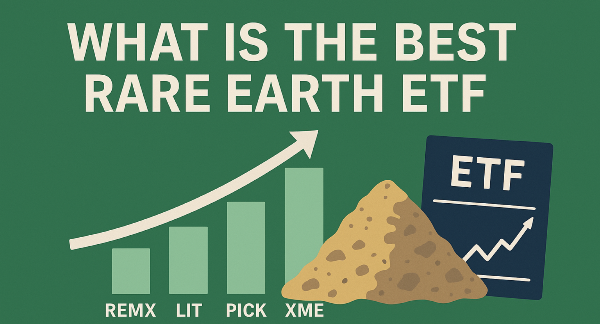Are Dividend Stocks Worth It? The Enduring Investment Debate
The allure of regular cash payments from dividend stocks undeniably sparks a lively debate among investors: are they a reliable path to long-term wealth, or do they come with hidden drawbacks? Dividend stocks represent shares in companies that distribute a portion of their profits to shareholders, typically offering a steady income stream that appeals to many. This perceived stability and income generation are core to their appeal. However, the true "worth" of dividend stocks isn't universal; it depends heavily on individual financial goals, personal risk tolerance, and a comprehensive understanding of both their benefits and potential pitfalls. This article will provide a balanced perspective on whether dividend stocks are a worthwhile investment, exploring their advantages and disadvantages, and outlining key factors to consider when determining if they align with your investment strategy.
The Compelling Advantages of Investing in Dividend Stocks
For many investors, the benefits of incorporating dividend stocks into their portfolios are substantial. A primary draw is the creation of a regular income stream, essentially passive income that can be particularly valuable for retirees seeking consistent cash flow or anyone looking to supplement their existing income. This consistent payout can even help to offset the effects of inflation over time. Another powerful advantage is the potential for compounding returns through dividend reinvestment (DRIPs). By using dividends to purchase more shares, investors can accelerate their wealth accumulation, experiencing a "snowball effect" where earnings on earnings significantly boost long-term growth. Historically, companies that consistently pay and grow their dividends have often demonstrated outperformance over non-dividend payers over extended periods, signaling strong financial discipline and robust management. These companies are typically mature, established, and financially sound, suggesting predictable earnings and cash flow, and can even offer some downside protection during market downturns as the continuous income stream may reduce the impulse to sell during volatility.
The Potential Downsides and Risks of Dividend Stocks
Despite their attractive qualities, dividend stocks are not without their risks and potential downsides, which every investor should carefully consider. One significant concern is that they might be suboptimal for a pure growth focus. Companies paying high dividends are often mature businesses with fewer opportunities for aggressive reinvestment, meaning they might underperform during strong, growth-led bull markets. Investors also need to be mindful of tax implications, as dividends are taxable income, even if reinvested, which can complicate tax planning in taxable accounts. A particularly insidious trap is the "dividend trap," where a very high dividend yield might actually indicate a struggling company with a rapidly falling stock price rather than a healthy one. These situations carry a significant risk of dividend cuts or suspension, leading to substantial capital loss for investors. Furthermore, dividend stocks can exhibit interest rate sensitivity, becoming less attractive when bond yields rise and offer competitive, less volatile returns. Lastly, failing to diversify beyond just dividend stocks can lead to dangerous concentration risk, leaving your portfolio vulnerable to specific company or industry-wide downturns.
Key Considerations Before Investing in Dividend Stocks
Before deciding if dividend stocks are worth it for your portfolio, a thoughtful assessment of your individual circumstances is essential. Begin by clarifying your financial goals: are you primarily seeking immediate income to supplement your lifestyle, or is your focus on long-term capital appreciation for retirement? How do potential dividend payouts integrate into your broader financial plan? Your time horizon is another crucial factor; longer investment horizons generally allow more time for the powerful effects of compounding returns (through dividend reinvestment) to manifest, while shorter horizons might prioritize capital preservation. Understand your risk tolerance: while often perceived as stable, dividend stocks are still equities and are subject to market fluctuations and inherent risks. Crucially, prioritize quality over quantity; avoid "yield chasing" by solely focusing on the highest dividend yield. Instead, research companies with a demonstrated history of sustainable dividend growth, strong fundamentals, a competitive advantage, and promising future prospects. Lastly, remember that diversification is paramount: integrate dividend stocks as a component of a broader portfolio that includes other asset classes like bonds and growth stocks, ensuring you never put all your investment eggs in one basket.
How to Identify "Worthwhile" Dividend Stocks
To truly determine if dividend stocks are worth it for your investment strategy, you need to know how to identify the genuinely "worthwhile" ones from potential "dividend traps." Begin by scrutinizing a company's strong financial health: look for consistent earnings, robust positive free cash flow, and manageable debt levels, as these are the bedrock of sustainable dividend payments. A critical metric to analyze is the sustainable payout ratio; this indicates the percentage of earnings a company pays out as dividends. A healthy payout ratio (often below 60-70% for established companies) suggests that the company retains enough earnings for reinvestment and future growth, making the dividend more secure. Furthermore, examine the company's history of consistent dividend payments and growth. Companies known as "Dividend Aristocrats" or "Dividend Kings" have a long track record of consistently increasing their dividends, signaling a strong commitment to shareholders and financial discipline. Look for businesses with a competitive advantage (often called a "moat") that protects their profits, and assess their future growth prospects, as the ability to grow earnings is essential for supporting future dividend increases.
Conclusion: Are Dividend Stocks Worth It? Yes, With Strategic Integration.
So, are dividend stocks worth it? The answer is a resounding yes, but with a critical caveat: they are most valuable when integrated strategically into a well-diversified, thoughtfully constructed investment portfolio, rather than being the sole focus. We've recapped their core benefits, such as consistent income, inherent stability, and the powerful effect of compounding returns through reinvestment. However, we've also highlighted the significant risks, including the potential for "dividend traps," missed growth opportunities, and concentration risk if not properly diversified. The key takeaway is clear: for investors whose financial goals align with the characteristics of dividend stocks – particularly those seeking income and a measure of stability – they can be an excellent addition. However, they should always be viewed as a component, not the entirety, of your investment strategy. To make the most informed decisions, we encourage you to consult a financial advisor who can help you build a personalized investment strategy, or to continue your research into specific dividend-paying companies and broader asset allocation principles.




























Are Dividend Stocks Worth It? The Enduring Investment Debate
The allure of regular cash payments from dividend stocks undeniably sparks a lively debate among investors: are they a reliable path to long-term wealth, or do they come with hidden drawbacks? Dividend stocks represent shares in companies that distribute a portion of their profits to shareholders, typically offering a steady income stream that appeals to many. This perceived stability and income generation are core to their appeal. However, the true "worth" of dividend stocks isn't universal; it depends heavily on individual financial goals, personal risk tolerance, and a comprehensive understanding of both their benefits and potential pitfalls. This article will provide a balanced perspective on whether dividend stocks are a worthwhile investment, exploring their advantages and disadvantages, and outlining key factors to consider when determining if they align with your investment strategy.
The Compelling Advantages of Investing in Dividend Stocks
For many investors, the benefits of incorporating dividend stocks into their portfolios are substantial. A primary draw is the creation of a regular income stream, essentially passive income that can be particularly valuable for retirees seeking consistent cash flow or anyone looking to supplement their existing income. This consistent payout can even help to offset the effects of inflation over time. Another powerful advantage is the potential for compounding returns through dividend reinvestment (DRIPs). By using dividends to purchase more shares, investors can accelerate their wealth accumulation, experiencing a "snowball effect" where earnings on earnings significantly boost long-term growth. Historically, companies that consistently pay and grow their dividends have often demonstrated outperformance over non-dividend payers over extended periods, signaling strong financial discipline and robust management. These companies are typically mature, established, and financially sound, suggesting predictable earnings and cash flow, and can even offer some downside protection during market downturns as the continuous income stream may reduce the impulse to sell during volatility.
The Potential Downsides and Risks of Dividend Stocks
Despite their attractive qualities, dividend stocks are not without their risks and potential downsides, which every investor should carefully consider. One significant concern is that they might be suboptimal for a pure growth focus. Companies paying high dividends are often mature businesses with fewer opportunities for aggressive reinvestment, meaning they might underperform during strong, growth-led bull markets. Investors also need to be mindful of tax implications, as dividends are taxable income, even if reinvested, which can complicate tax planning in taxable accounts. A particularly insidious trap is the "dividend trap," where a very high dividend yield might actually indicate a struggling company with a rapidly falling stock price rather than a healthy one. These situations carry a significant risk of dividend cuts or suspension, leading to substantial capital loss for investors. Furthermore, dividend stocks can exhibit interest rate sensitivity, becoming less attractive when bond yields rise and offer competitive, less volatile returns. Lastly, failing to diversify beyond just dividend stocks can lead to dangerous concentration risk, leaving your portfolio vulnerable to specific company or industry-wide downturns.
Key Considerations Before Investing in Dividend Stocks
Before deciding if dividend stocks are worth it for your portfolio, a thoughtful assessment of your individual circumstances is essential. Begin by clarifying your financial goals: are you primarily seeking immediate income to supplement your lifestyle, or is your focus on long-term capital appreciation for retirement? How do potential dividend payouts integrate into your broader financial plan? Your time horizon is another crucial factor; longer investment horizons generally allow more time for the powerful effects of compounding returns (through dividend reinvestment) to manifest, while shorter horizons might prioritize capital preservation. Understand your risk tolerance: while often perceived as stable, dividend stocks are still equities and are subject to market fluctuations and inherent risks. Crucially, prioritize quality over quantity; avoid "yield chasing" by solely focusing on the highest dividend yield. Instead, research companies with a demonstrated history of sustainable dividend growth, strong fundamentals, a competitive advantage, and promising future prospects. Lastly, remember that diversification is paramount: integrate dividend stocks as a component of a broader portfolio that includes other asset classes like bonds and growth stocks, ensuring you never put all your investment eggs in one basket.
How to Identify "Worthwhile" Dividend Stocks
To truly determine if dividend stocks are worth it for your investment strategy, you need to know how to identify the genuinely "worthwhile" ones from potential "dividend traps." Begin by scrutinizing a company's strong financial health: look for consistent earnings, robust positive free cash flow, and manageable debt levels, as these are the bedrock of sustainable dividend payments. A critical metric to analyze is the sustainable payout ratio; this indicates the percentage of earnings a company pays out as dividends. A healthy payout ratio (often below 60-70% for established companies) suggests that the company retains enough earnings for reinvestment and future growth, making the dividend more secure. Furthermore, examine the company's history of consistent dividend payments and growth. Companies known as "Dividend Aristocrats" or "Dividend Kings" have a long track record of consistently increasing their dividends, signaling a strong commitment to shareholders and financial discipline. Look for businesses with a competitive advantage (often called a "moat") that protects their profits, and assess their future growth prospects, as the ability to grow earnings is essential for supporting future dividend increases.
Conclusion: Are Dividend Stocks Worth It? Yes, With Strategic Integration.
So, are dividend stocks worth it? The answer is a resounding yes, but with a critical caveat: they are most valuable when integrated strategically into a well-diversified, thoughtfully constructed investment portfolio, rather than being the sole focus. We've recapped their core benefits, such as consistent income, inherent stability, and the powerful effect of compounding returns through reinvestment. However, we've also highlighted the significant risks, including the potential for "dividend traps," missed growth opportunities, and concentration risk if not properly diversified. The key takeaway is clear: for investors whose financial goals align with the characteristics of dividend stocks – particularly those seeking income and a measure of stability – they can be an excellent addition. However, they should always be viewed as a component, not the entirety, of your investment strategy. To make the most informed decisions, we encourage you to consult a financial advisor who can help you build a personalized investment strategy, or to continue your research into specific dividend-paying companies and broader asset allocation principles.